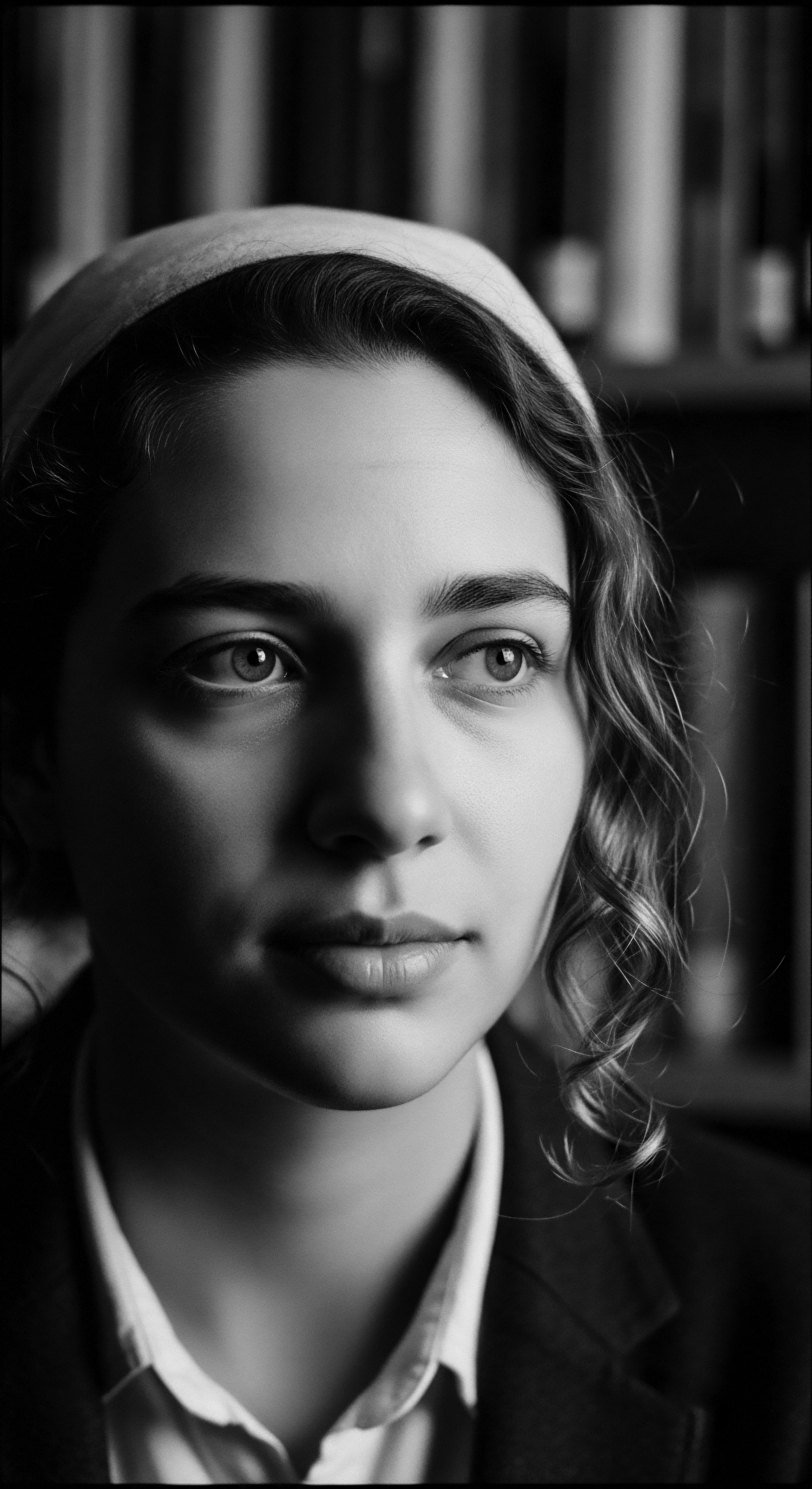
Roots
There are stories held within each strand, whispers of ancient sun, vast, open lands, and the incredible ingenuity of our forebears. When we ponder the question of hair’s place in the sweep of human experience, particularly the coil and curve of textured hair in arid environments, we find ourselves at the very genesis of humanity, on the sun-baked plains of equatorial Africa. This exploration extends beyond simple biology; it reaches into the very soul of a strand, recognizing hair not merely as biological outgrowth but as a living record of adaptation, survival, and profound connection to heritage.
The narrative begins with a recognition of the Earth’s ancient embrace, where our ancestors walked upright, their heads exposed to a relentless sun. In these formidable landscapes, every aspect of human physiology was honed by the elements. Scalp hair, rather than an accidental adornment, emerged as a brilliant natural solution, a silent protector. Its architecture, especially in tightly coiled forms, served as an organic shield against the intense solar radiation and heat that defined these early human habitats.

The Biophysics of Ancestral Crowns
The very structure of textured hair offers a masterclass in natural engineering. Each tightly coiled strand spirals away from the scalp, creating a canopy of sorts. This three-dimensional configuration allows for significant air circulation close to the scalp, acting as a natural ventilation system. Simultaneously, the density of these coils works to block direct solar radiation from reaching the skin.
Imagine a thousand tiny springs, each one conspiring to create a protective barrier. This particular morphology ensures that while sunlight is diffused and reflected, air can still move freely, facilitating a cooling effect.
Scientific inquiry has lent its weight to these ancestral observations. A compelling study by Lasisi, Jablonski, and Havenith (2023) explored the thermoregulatory capacity of various hair textures using a thermal manikin. Their findings confirmed that all hair types offer some protection against solar radiation, yet tightly curled hair emerged as the most effective in minimizing heat gain from the sun and reducing the need for excessive sweating. This research highlights how this unique hair form not only guards against the sun’s radiative heat but also contributes to the body’s water conservation efforts, a critical advantage in parched environments.
Lasisi, in explaining the significance, observed that walking upright exposed early humans’ scalps to intense sun, and scalp hair provided a “passive mechanism” to reduce heat gain that sweat glands alone could not fully offset (Lasisi et al. 2023; Jablonski, 2023). This capacity to keep the brain cool without substantial water loss was, some theorize, a contributing factor to the expansion of the human brain, allowing for greater cognitive development (Lasisi et al. 2023).
The coiled architecture of textured hair provided a natural thermoregulatory advantage, safeguarding early human brains in sun-drenched ancestral lands.

Melanin’s Deep Protection
Beyond its physical structure, the intrinsic composition of textured hair, often rich in eumelanin, plays a significant role in its protective qualities. Eumelanin, the dark pigment responsible for brown and black hair colors, is a formidable absorber of ultraviolet radiation. This means the hair itself acts as a natural sun filter, preventing harmful UV rays from damaging the scalp and the delicate skin beneath.
While skin pigmentation offers a primary defense, the additional layer of UV protection provided by dense, dark hair represents a complementary shield, particularly vital in regions with consistently high solar exposure. The combined protective elements of hair texture and melanin density paint a picture of extraordinary biological attunement to harsh environmental realities.
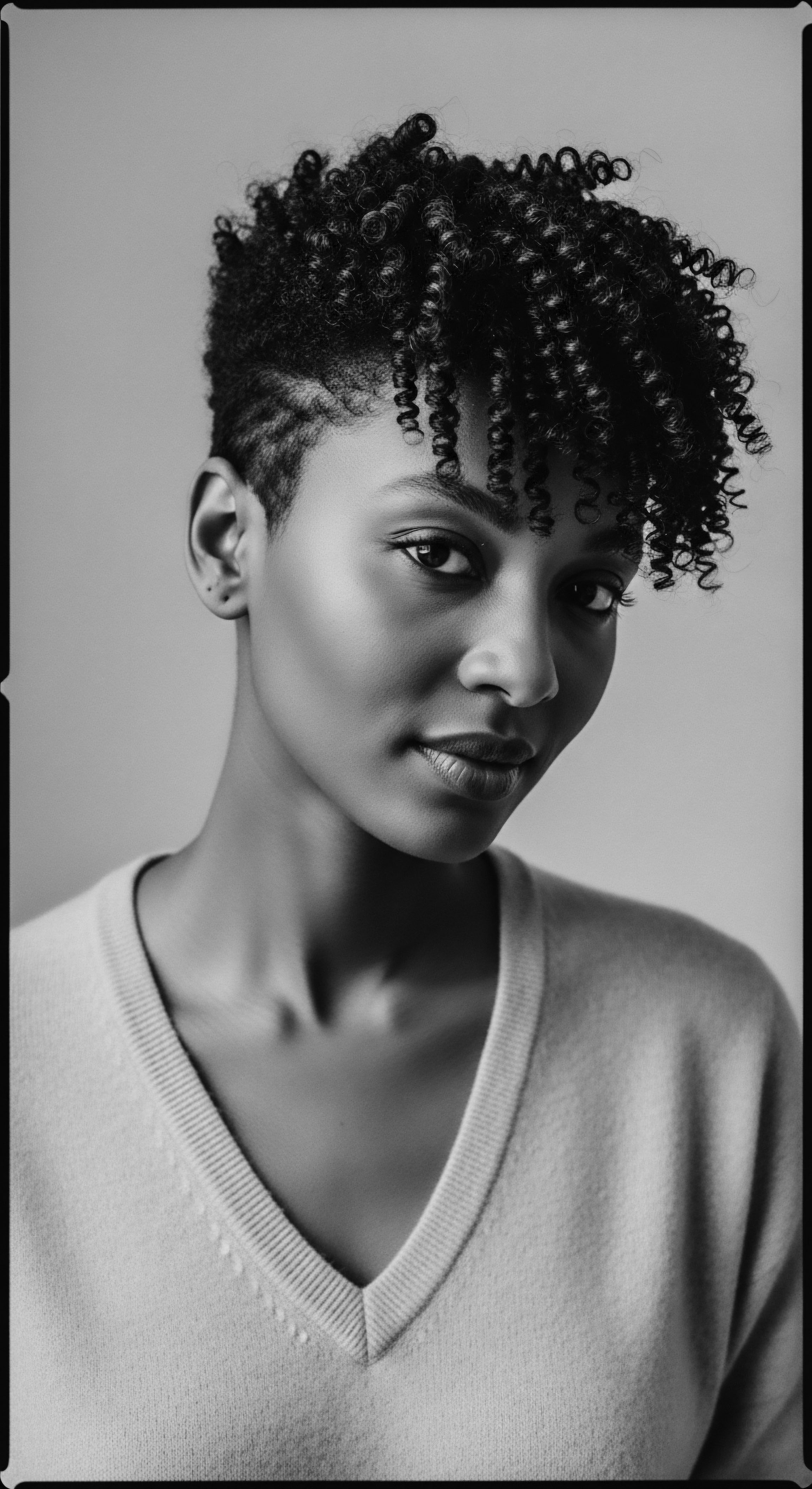
Ritual
The evolutionary advantages of textured hair did not solely reside in its inherent biology. From the earliest moments of human communal life, the shaping and adorning of hair became an integral part of how ancestral communities engaged with their environment and expressed their identity. These ancient styling rituals transformed a biological adaptation into a living cultural practice, a testament to collective wisdom and shared heritage. The very act of styling textured hair in arid lands was, and in many places remains, an art form deeply intertwined with survival, connection, and spiritual significance.
In the sun-baked expanses where human stories truly began, the braiding and coiling of hair were not simply aesthetic choices. They were practical responses to environmental demands, methods passed down through generations to preserve the hair and scalp against the harsh realities of desert winds, dust, and relentless sun. These practices, born of necessity, evolved into rituals that affirmed lineage, communicated social standing, and bound communities together through shared care.
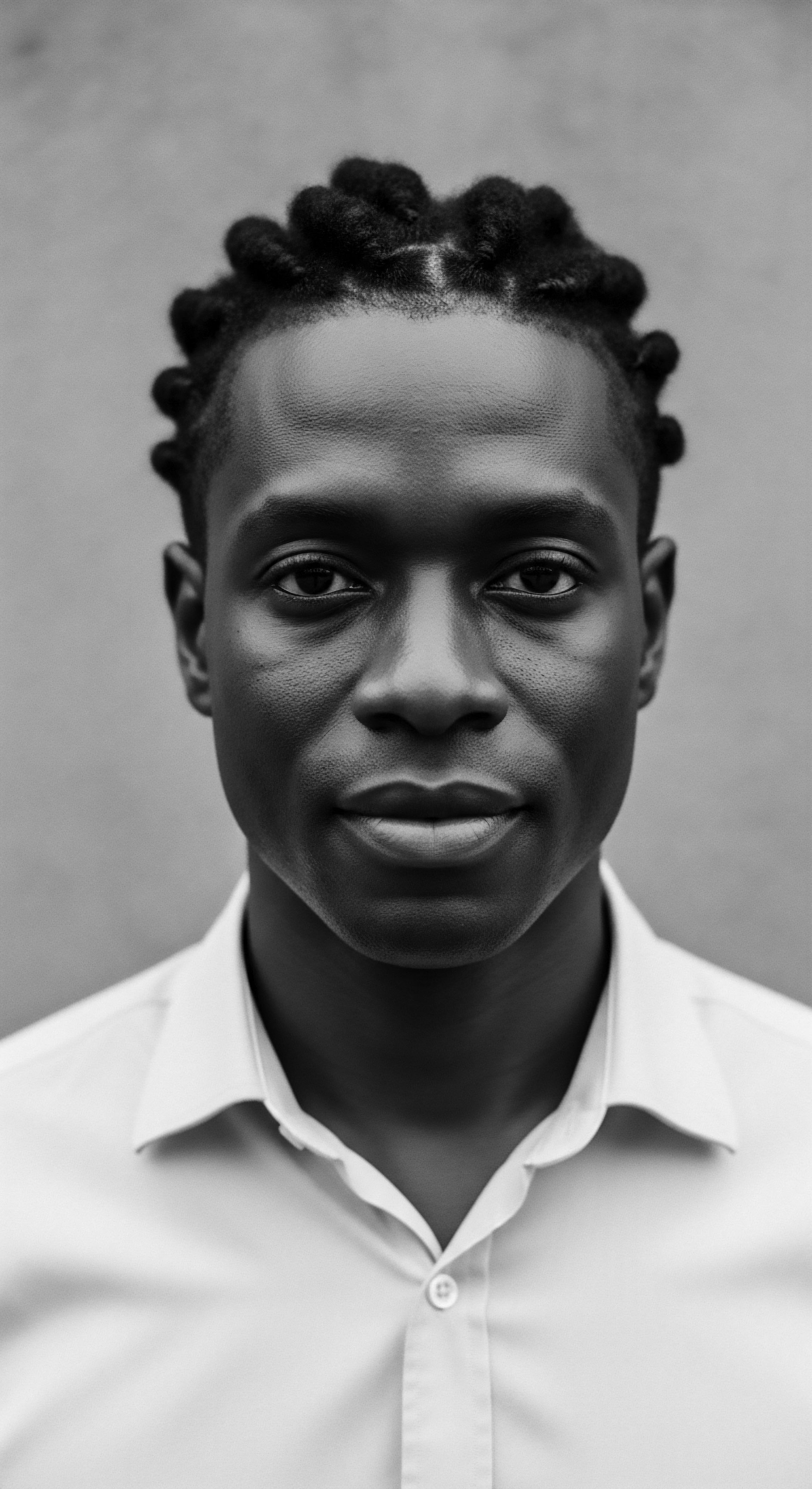
Ancestral Styling as Environmental Response
Consider the myriad forms of protective styling that originated on the African continent. Styles such as braids, twists, and cornrows, dating back thousands of years, minimized exposure of the scalp and hair shafts to direct sun and arid air. By gathering strands together, these styles reduced tangling and breakage, conserving the hair’s natural moisture in climates where humidity was a luxury. A rock painting of a woman with cornrows, discovered in the Sahara Desert and dating to 3500 BCE, provides one of the earliest known depictions of braids, underscoring their ancient lineage as both adornment and protection (Odele Beauty, 2024).
- Cornrows ❉ Tightly braided rows lying flat against the scalp. These styles minimized direct sun exposure on the scalp while keeping hair neatly contained, reducing environmental damage. Their historical use also extends to mapping escape routes during periods of enslavement, demonstrating their functional and symbolic depth (Royaltee Magazine, 2021).
- Bantu Knots ❉ Coiled sections of hair twisted into small, tight buns. These styles compact the hair, safeguarding the ends from dryness and mechanical friction against clothing or other elements.
- Locs ❉ Formed by the natural intertwining of hair, often nurtured and maintained over years. Locs naturally provide a dense, protective layer against environmental stressors and were, in some cultures, symbols of spiritual devotion and strength (BLAM UK CIC, 2022).
Ancient hair rituals, born from the need to protect in harsh climates, became profound expressions of communal identity and ancestral wisdom.

Traditional Tools and Adornments
The implements used in these ancestral styling practices were equally ingenious, crafted from materials readily available in their natural surroundings. Bone combs, wooden picks, and intricately carved hairpins were not only functional for detangling and styling but also often held symbolic meanings. Adornments of cowrie shells, beads, and precious metals, while decorative, could also signify wealth, social status, or tribal affiliation (Afriklens, 2024). The Himba people of Namibia, for instance, are renowned for their otjize paste—a rich mixture of butterfat and red ochre—which they apply to their hair and skin.
This tradition is a powerful case study in the intersection of protection, cultural identity, and environment. Otjize acts as a sun protection, an insect repellent, and an aesthetic statement, a vibrant connection to their ancestral lands and beliefs (Bebrų Kosmetika, 2024). The practice reflects centuries of accumulated knowledge about living in a parched landscape, where hair care is a holistic endeavor, recognizing the interconnectedness of body, spirit, and land.
| Element Braids/Twists/Cornrows |
| Traditional Application/Context Worn across various African societies, signifying status, age, or tribal identity; communal styling ritual. |
| Environmental Protection Benefit Minimized scalp exposure to sun, reduced tangling, preserved hair moisture in dry air. |
| Element Otjize Paste (Himba) |
| Traditional Application/Context Applied to hair and skin as a cultural identity marker; ritualistic significance. |
| Environmental Protection Benefit Provided natural sunscreen and insect repellent; moisturized hair and skin in arid conditions (Bebrų Kosmetika, 2024). |
| Element Natural Oils/Butters |
| Traditional Application/Context Shea butter, coconut oil, animal fats used across Africa for nourishment. |
| Environmental Protection Benefit Sealed in moisture, shielded hair from dryness and breakage due to environmental exposure (African American Hair, 2025). |
| Element These ancestral practices demonstrate a deep understanding of hair's needs in challenging climates, integrating protection with cultural expression. |

Relay
The wisdom of ancestral hair practices, honed over millennia in response to arid environments, continues to echo through contemporary care routines. This continuity, a living legacy of heritage, guides our understanding of holistic hair wellness. Modern science, in its ongoing discoveries, often illuminates the underlying principles that our forebears understood intuitively. The interplay between historical insights and current knowledge helps us comprehend how textured hair’s unique properties inform care, particularly in challenging climates, and how these practices were relayed through generations, adapting yet holding steadfast to their core purpose.
The journey of textured hair care from antiquity to the present is a narrative of resilience, adaptation, and an enduring respect for what the natural world offers. Our ancestors in arid lands did not have laboratories or thermal manikins, yet their practices, rooted in observation and necessity, often mirror the very scientific principles we now articulate. This connection reinforces the authority embedded within traditional knowledge systems.

The Regimen of Resilience
In environments where water was scarce and the sun fierce, traditional care regimens focused on minimizing moisture loss and protecting the hair’s integrity. Natural oils, butters, and various plant extracts were fundamental. Shea butter, sourced from the karité tree native to West Africa, has been a cornerstone of hair and skin care for centuries, prized for its ability to seal moisture into strands. Similarly, various clays and plant-based mixtures were used not only to cleanse but also to create a protective barrier.
These practices were not isolated acts; they were often communal, fostering bonding and transmitting knowledge from elder to youth. The Himba people’s otjize, mentioned previously, serves as a powerful example. This blend of butterfat, ochre, and aromatic resin is not merely a cosmetic application; it is a multi-functional protective agent against the sun and dryness, directly addressing the environmental challenges of their arid Namibian homeland (Bebrų Kosmetika, 2024). Such a tradition stands as a robust testament to how communities developed sophisticated, localized solutions for thriving in their specific environments.
The curly configuration of textured hair, while advantageous for thermoregulation, also means natural oils produced by the scalp can find it challenging to travel the entire length of the hair shaft, leading to dryness (Hera Hair Beauty, 2022). Ancestral practices of applying oils and butters directly to the hair addressed this, providing external lubrication and a protective seal. This historical solution aligns perfectly with modern understanding of moisture retention for coiled strands, especially in low-humidity settings.
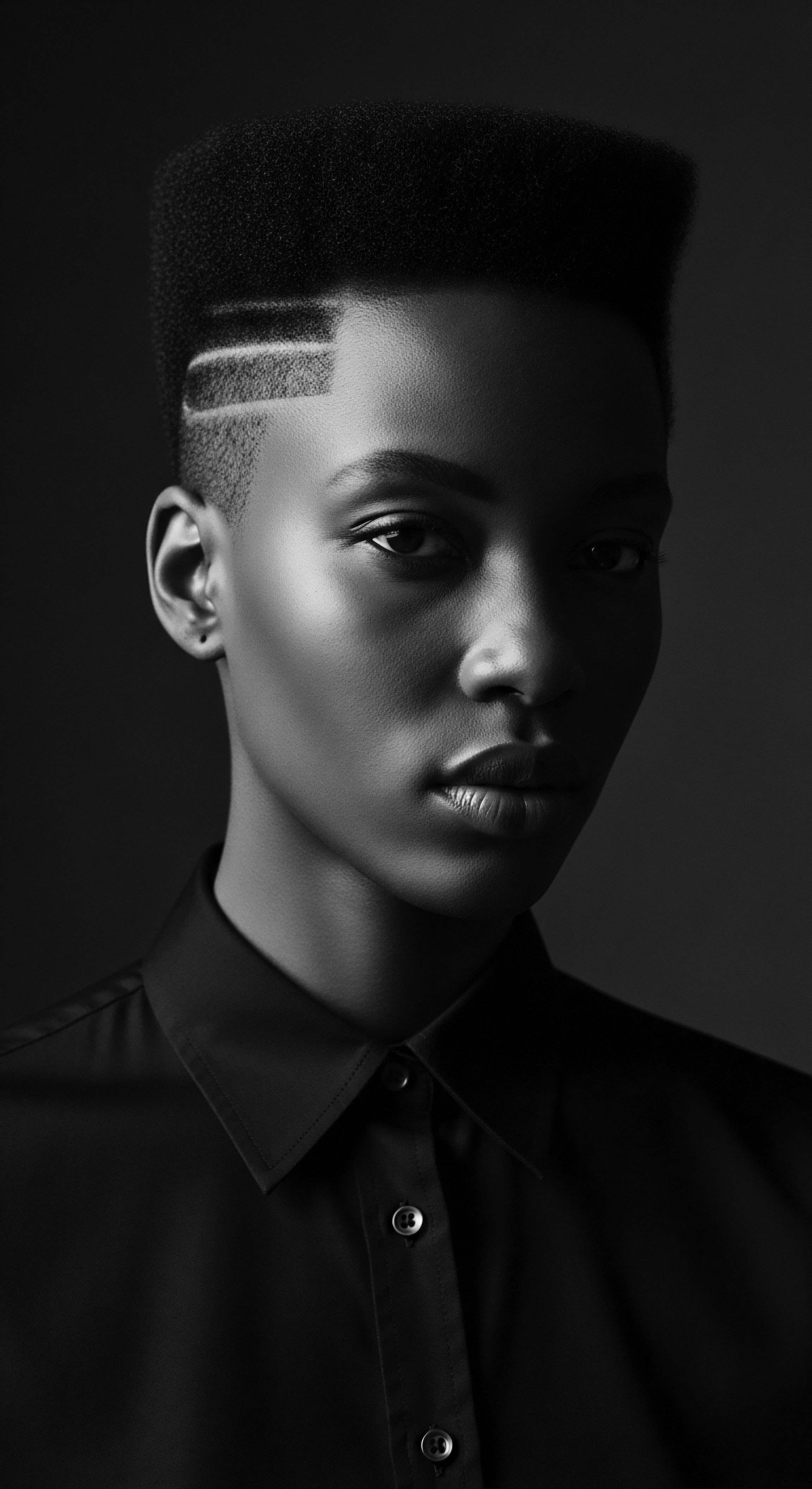
How Did Ancestral Wisdom Inform Scalp Health?
Scalp health was paramount, particularly in environments prone to dust and sun exposure. Traditional approaches often involved scalp massages with herbal infusions and natural oils, stimulating blood flow and nourishing the hair follicles. These practices recognized the scalp as the foundation of healthy hair, understanding its direct exposure to environmental elements.
The use of head coverings, from elaborate wraps to simple scarves, also served a dual purpose ❉ cultural expression and practical protection against the elements, shielding the hair and scalp from direct sun and wind (Afriklens, 2024). This historical use of coverings highlights an acute awareness of environmental stressors and an adaptive, cultural response.
- Shea Butter ❉ A fatty extract from the shea nut, indigenous to West Africa. Used for centuries to condition hair, reduce breakage, and shield strands from harsh climates due to its emollient properties (African American Hair, 2025).
- Chebe Powder ❉ A traditional hair remedy from Chad, used by Basara women for length retention. It is a finely ground mixture of herbs, often combined with oils, applied to protect and strengthen hair fibers (Reddit, 2021).
- Moringa Oil ❉ Derived from the seeds of the moringa tree, found in arid and semi-arid regions of Africa. Valued for its moisturizing and fortifying properties, it nourished hair and scalp in dry conditions.
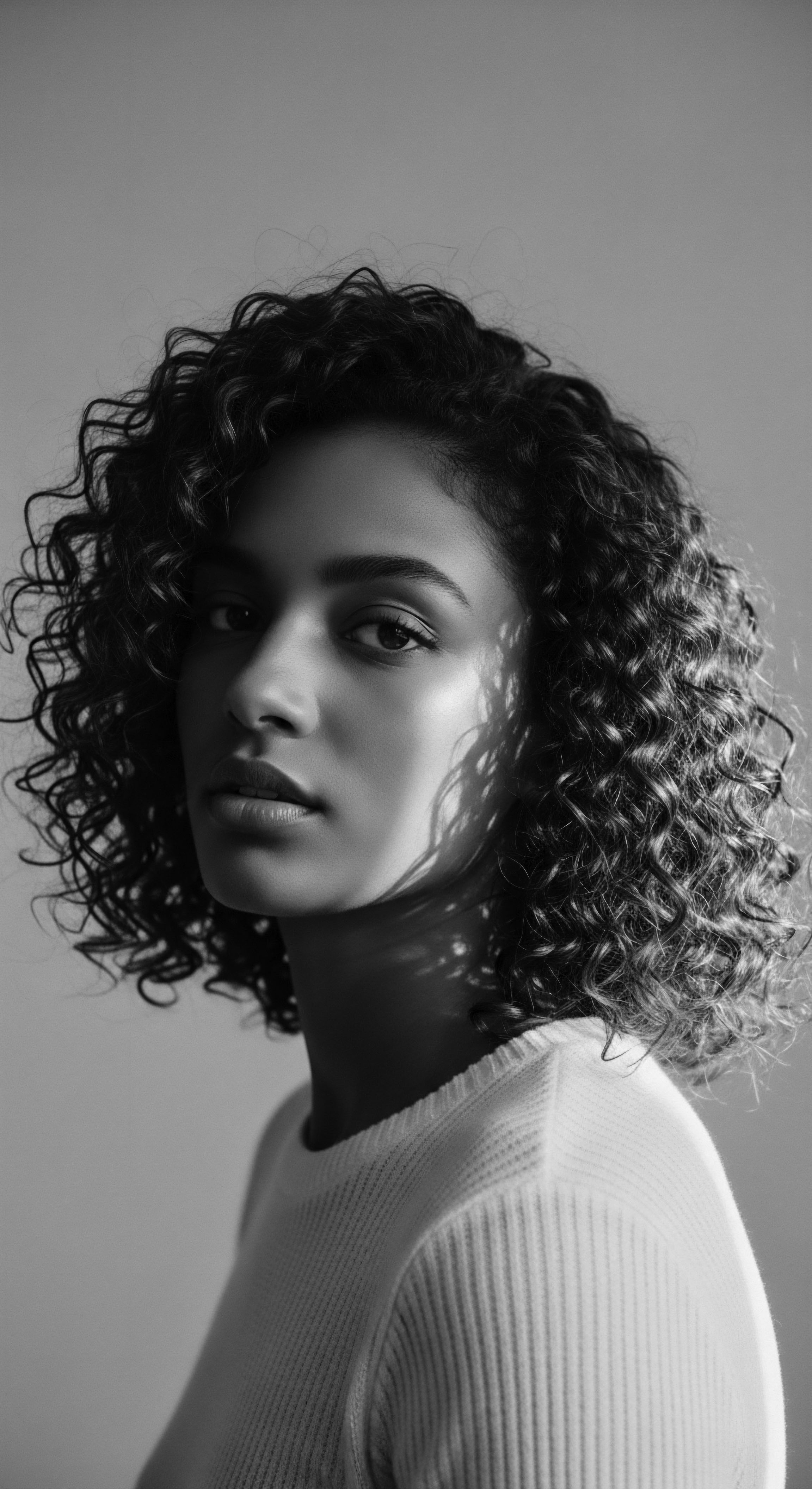
Problem Solving with Deep Roots
When faced with challenges common to hair in arid conditions—dryness, brittleness, breakage—ancestral communities developed a wealth of solutions that were deeply integrated into their daily lives. The very texture of the hair, with its inherent coil and often higher porosity, necessitates specific care to manage moisture. The knowledge of which natural elements could address these concerns was passed through oral traditions, hands-on teaching, and community gatherings. These methods bypassed the need for commercial products, relying instead on a profound connection to the local flora and fauna.
The Himba people’s ongoing tradition of otjize, a mix of ochre and butterfat, epitomizes this. It provides both protection and moisture, maintaining the integrity of their intricately styled hair in a desert environment (Bebrų Kosmetika, 2024). This living practice demonstrates a continuous line of understanding and adaptation, a relay of heritage through generations.
The holistic influences on hair health extended beyond topical applications. Diet, largely dictated by local ecosystems, played its part. Nutritional elements from indigenous plants and sustainable food sources contributed to overall wellness, which in turn supported healthy hair growth.
This integral approach, viewing hair health as part of total bodily and communal wellness, represents a sophisticated understanding of well-being that contemporary holistic practices now seek to rediscover and integrate. The ancestral practices provide a powerful reminder that the finest care springs from an attuned relationship with both one’s body and the environment.

Reflection
To consider the evolutionary benefit of textured hair in arid environments is to engage with a profound testament to biological adaptation and human ingenuity. The coil and density of textured hair provided a foundational shield for our ancestors, a defense against the sun’s harsh glare and the relentless heat of equatorial lands. This natural shield facilitated not only survival in demanding climates but also, quite remarkably, supported the expansive growth of the human brain. This biological gift, however, never existed in isolation.
The true depth of this evolutionary story comes into view when we recognize the profound ways human cultures, particularly those of Black and mixed-race communities, recognized, honored, and amplified these inherent benefits through generations of care and ritual. Hair became a canvas for identity, a conduit for communication, and a repository of communal memory. From the intricate cornrows depicted in ancient rock art to the multi-functional otjize of the Himba, these practices transformed physiological advantages into vibrant cultural heritage.
Every twist, every braid, every application of natural butter, carries the weight of ancestral wisdom. It speaks of a deep, intuitive science – a knowing of what protects, what nourishes, and what connects. The textured hair on countless heads today is a living library, a continuous thread extending from the earliest human footsteps on the savannah to our modern world. It is a reminder that beauty, function, and heritage are not separate entities, but intertwined aspects of a collective human journey, resilient and radiant.

References
- African American Hair. (2025). Hair Care Practices from the Diaspora ❉ A Look at Africa, America, and Europe.
- Bebrų Kosmetika. (2024). The Power of Hair in African Folklore ❉ Rituals and Traditions.
- BLAM UK CIC. (2022). The History of Black Hair.
- Hera Hair Beauty. (2022). The Science Behind Curly Hair.
- Jablonski, N. (2023). Humans evolved in equatorial Africa, where the sun is overhead for much of the day, year in and year out.
- Lasisi, T. Jablonski, N. G. & Havenith, G. (2023). Human scalp hair as a thermoregulatory adaptation. Proceedings of the National Academy of Sciences, 120(24), e2300027120.
- Odele Beauty. (2024). A History Lesson On Hair Braiding.
- Reddit. (2021). No raw oils and butters vs. Traditional African hair care? ❉ r/Naturalhair.
- Royaltee Magazine. (2021). Braids, Plaits, Locs ❉ The History of Black Protective Hairstyles.
